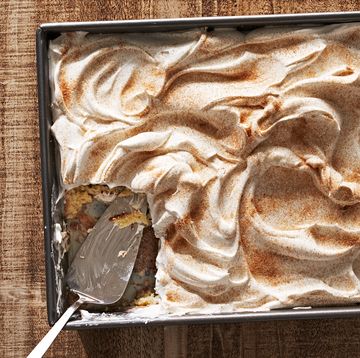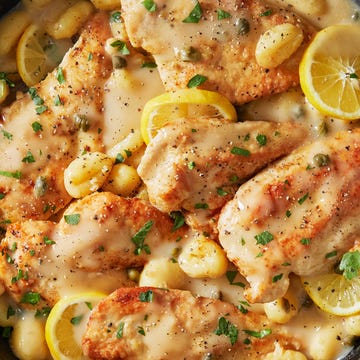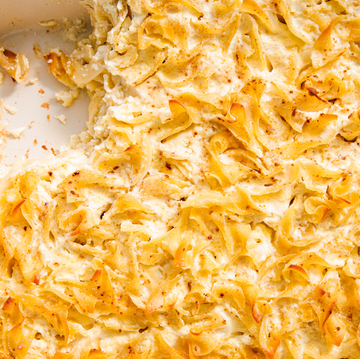If we're looking for a true holiday roast to be the center of our Christmas table, we turn to the classic prime rib. Also referred to as standing rib roast, prime rib is known for being a must at the holiday dinner table because of its ability to serve a crowd and the irresistible taste. Juicy and full of flavor, this show-stopping roast is not as difficult to perfect as you may think. Plus, it's impressive, making your guests think you labored for hours in the kitchen, while in reality the oven did all the work for you. 😉
What is a prime rib roast?
Prime rib can be some what of a misnomer depending on where you're shopping for your meat. While the cut is refers to a prime rib or standing rib roast, the quality of most supermarket cuts is actually USDA Choice and is signified by moderate marbling of fat and relatively high quality. USDA Prime cuts of beef are more heavily marbled with fat, very high quality, and harder to find. USDA Choice cuts are certainly a great candidate for prime rib roast, but if you want to experience a true Prime cut for a special occasion, just expect to pay a little bit more and a fattier, more flavorful cut. If possible, avoid USDA select cuts for larger, pricier cuts as they tend to be leaner and less flavorful.
A beef rib roast is made of the seven bones the stretch across a cow's side, sandwiched between the shoulder chuck and the short loin, and is usually split into to two cuts. The larger end, closer to the chuck, is typically fattier with more connective tissue. Although it produces a more irregular slice, it has a ton of flavor. The smaller end, closer to the short loin, is slightly less fatty but more tender and uniform. Depending on what you're looking for, both can yield tasty results!
How many people does prime rib serve?
Feeding a crowd always feels like it takes a little bit of guess work, but as a simple rule of thumb, you should account for about one pound per person if this is the main protein, and 1/2 pound per person if prime rib is a part of a buffet. If you end up with extra, leftover prime rib is never ever a bad thing.
How can I get a browned, flavorful, crusty crust?
A cut like prime rib deserves time, love, and attention. Starting a few days ahead can help you get a perfectly crusty outer layer while keeping the center perfectly cooked. Here are two methods for encouraging a crust on your prime rib:
Method 1: Pat the meat dry, set it on a rack on a baking sheet, and let it sit unseasoned and covered with cheesecloth or a clean tea towel in the refrigerator for up to 7 days. Pat dry again and season with salt and pepper before cooking.
Method 2: Pat the meat dry, set it on a rack on a baking sheet, and season with salt and pepper. Place uncovered in the refrigerator overnight or up to 4 days. Both methods will yield a darker, more flavorful crust.
How long do I cook prime rib?
Plan on about 15 to 20 minutes per pound. Keep in mind that the roast will continue cooking once it comes out of the oven—that's why it's important to let it rest for 15 to 20 minutes after removing from the oven. Check for doneness by inserting a probe thermometer into the center of the rounded part the roast at a 45° angle. Leaving the thermometer in while the roast cooks (with the display sitting on the countertop) will allow you to remove it from the oven when it reaches the desired doneness. While medium rare is our preferred doneness, follow these temperatures for when you'll want to remove the meat from the oven based on your desired doneness.
Medium-rare — 110º
Medium — 120º
Medium-well — 130º
Well — 140º
How do I cook a prime rib roast in the oven?
There are two great methods for cooking prime rib in the oven. The traditional method, and the reverse-sear method. Both methods involve cooking at two temperatures.
For the more traditional method, you're going to want to start the roast at 450º, which will help get a nice sear on the outside of your meat, and then at 350º to roast all the way through. Once you sear the meat at a high temp for 30 minutes, you reduce the heat and continue cooking until the meat thermometer reads 120º for medium. While this method is a classic and will yield a delicious result, the high temp start can cause the outer layer of the roast to cook longer than the center, meaning you'll get a little less of the warm, red center.
To get the perfect even cook all the way through, try a reverse sear. A reverse sear is exactly what it sounds like. Rather than starting at a super high temp, you let the roast cook low and slow at 225 to 250°, depending on how low your oven will go, until the center reaches the desired doneness. Let the meat rest for 30 minutes. To finish the roast and put a sear on the outside, crank the oven as high as it will go, 500 to 550° and let it roast for an additional 5 to 10 minutes. It can be carved and served right away, hot and juicy.
Have you tried this yet? Let us know how it went in the comments below!


















